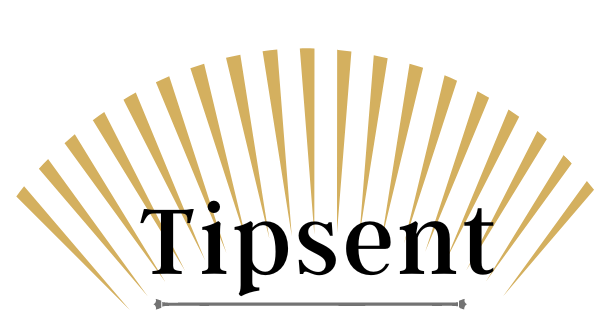Due to its potential health advantages, Lymphatic Drainage Massage has grown in popularity. The lymphatic system, a component of the immune system, is the focus of this specialised approach.
This kind of massage aims to support the body’s immune system, fluid balance, and healthy blood circulation.
Knowledge Of The Lymphatic System
The lymphatic system is made up of nodes and vessels that contain lymph, which is a fluid made up of proteins, water, waste products, and immune system components. Lymph nodes, which are present all over the body, filter this debris.
The armpits, groin, and neck contain the biggest nodes. To ensure that “clean” lymph is returned to the veins that carry blood to the heart, they all cooperate.
Lymphedema
People with lymphedema, which causes swelling, typically in one of your arms or legs, have used lymphatic drainage massage.
Lymph fluid that has accumulated in the soft tissues as a result of genetic disorders, injuries, infections, cancer treatment, or surgery is what causes the swelling.
Lymphedema signs and symptoms include:
- Pain
- Coloration Of The Skin
- Tissue Enlargement
- The Limbs Are Heavy
- Weakness
- Increasing The Skin’s Hardness Or Thickness
- Persistent Infections
Lymphatic Drainage Massage Advantages
Tight compression stockings or bandages can be used to treat lymphedema, but a manual lymphatic drainage massage can help maximise the results.
Lymph drainage massage can help with mild to moderate lymphedema symptoms if you have undergone a mastectomy, which involves the removal of breast tissue to treat or prevent breast cancer.
Treating Additional Medical Conditions
Lymphatic drainage massage can be used to treat a variety of health issues in addition to lymphedema. The massage may be more effective for some conditions than others.
According to studies, lymphatic drainage massage may be helpful for the following conditions:
- Arthritis rheumatism. As the symptoms of rheumatoid arthritis worsen, you might notice poor lymphatic flow. Along with the enlargement of the tissues, the joints also experience an increase in pain, function loss, and skin colour changes. These later-stage rheumatoid arthritis symptoms can be reduced with lymph drainage massage.
- Venous insufficiency that is ongoing (CVI). When the valves or walls of the veins in the legs don’t function properly, the condition is known as chronic venous insufficiency. The blood’s ability to return from the legs to the heart is hampered as a result. In people with CVI, a lymphatic drainage massage can aid in accelerating blood flow.
- The large artery in the thigh, the femoral artery, may function better right away following the massage session. Uncertainty surrounds the duration of this effect and the extent to which the massage reduces pain and swelling over the long term. It would be possible to learn more about the impact of this massage technique on CVI with more research in this field.
- Fibromyalgia. People who have fibromyalgia may benefit from a lymph drainage massage. Skin nerve inflammation, skin discoloration, and tissue swelling are all symptoms of this condition. For those with fibromyalgia, the massage has been shown to be more effective than connective tissue massage in treating depression, stiffness, and enhancing the quality of life.
Lymphatic Drainage Massage Types
There are four types of lymphatic drainage massage that are frequently performed by doctors, physical therapists, and massage therapists. These consist of.
- Vodder. This fundamental technique involves the therapist using a variety of sweeping motions in the area they are treating.
- Foldi. Using circular hand motions and brief periods of relaxation, the massage therapist must switch between the Foldi technique and the Vodder extension.
- Casley-Smith. Circular hand motions are used in this method of lymphatic massage as well, primarily using the sides and palms of the hands.
- Leduc. In order to collect lymph fluid and then reroute it for reabsorption into the larger lymphatic system, this technique uses hand motions.
These methods all operate according to the same theory. To stretch the skin in the direction of lymph flow, they all use gentle movements. The techniques must work their way outward from the area of the limb closest to the torso. Usually, the procedure takes between 15 and 60 minutes.
What Takes Place During A Massage For Lymph Drainage?
Make sure you’re receiving care from a qualified professional and consult your doctor before getting a lymphatic drainage massage. Stretching, compressing, gliding, and cupping motions are just a few of the massage techniques the massage therapist will use in a specific order.
Without exerting excessive pressure on the vessel, gentle rhythmic movements stimulate the lymphatic system. They ensure that lymph fluid doesn’t become trapped anywhere by facilitating fluid movement through the tissues and nodes.
When To Get A Massage For Lymph Drainage
A helpful method for treating lymphedema and other medical conditions is lymph drainage massage. Consult your doctor about the advantages of this type of massage if you experience the symptoms of trapped lymph fluid in the body. If you are looking for “Lymphatic Drainage Massage Near Me” in Croydon, UK then Medical Massage Detox is the best place to visit.

